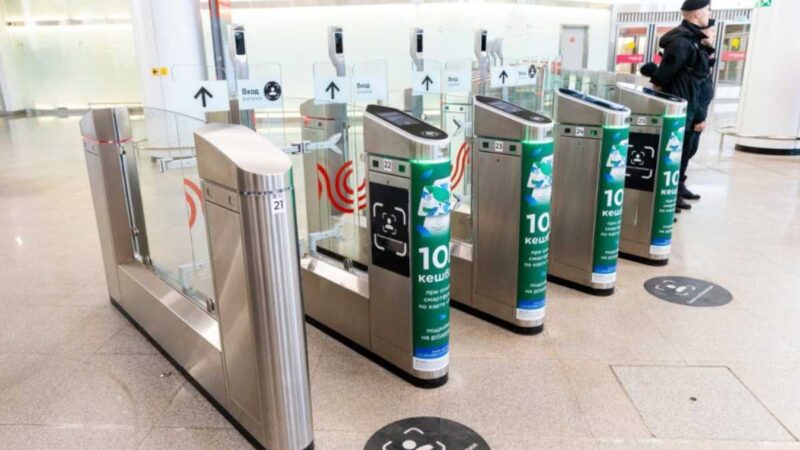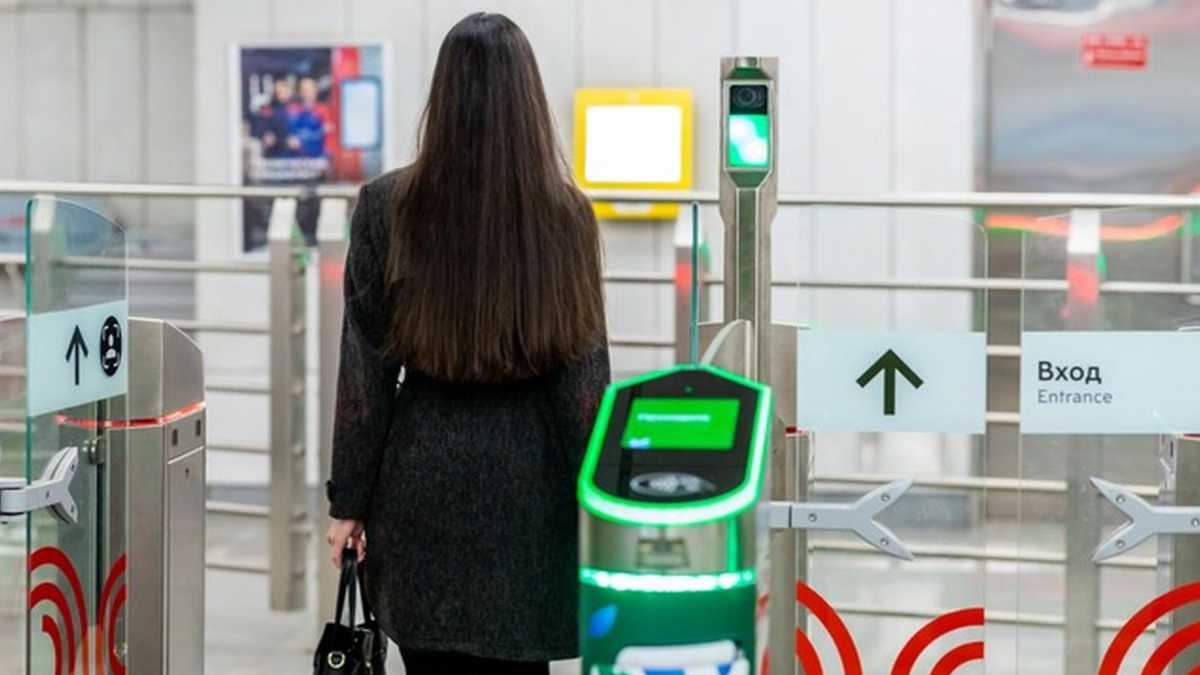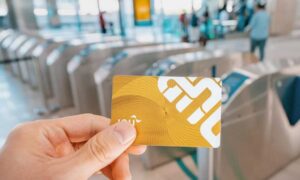The Moscow Metro, one of the world’s most extensive and iconic subway systems, is set to embark on a groundbreaking journey towards a more seamless and secure travel experience. With the installation of cutting-edge equipment at key stations, Moscow Metro is pioneering a touchless biometric fare payment service. This innovation aims to redefine how passengers pay for their rides and promises to make commuting within the Moscow Metropolis a breeze.
This comprehensive article will delve into the details of Moscow Metro’s biometric fare payment system. From its inception to its potential impact on the daily lives of millions, we’ll cover it all. Additionally, we’ll explore similar endeavors taking place globally, shedding light on the exciting developments in the world of transportation.
The Moscow Metro’s Biometric Fare Payment System
The First Stage of Trial
The journey towards a touchless biometric fare payment system begins with a pivotal first stage. As announced, the trial will commence in the first quarter of this year, initially involving the employees of the Metro Transport Complex. Subsequently, it will extend to all passengers, ushering in a new era of payment convenience.
Turnstiles Ready for Action
Moscow Metro has meticulously prepared to make this ambitious project a reality. Equipment for the biometric fare payment system is already in place at the turnstiles of several key stations, including Nakhabino, Zelenograd-Kryukovo, Likhobory, and Three Stations Square stations. This proactive approach ensures a seamless transition to the new payment method.
Maksim Liksutov’s Vision
Maksim Liksutov, the deputy mayor of Moscow for Transport, has been a driving force behind this innovative endeavor. He envisions a Metro system that prioritizes passengers’ convenience and security. The deployment of the biometric fare payment system is a testament to the city’s commitment to these principles.
Accessing the Service
The new biometric fare payment service is designed to be accessible to many users. Moscow Metro passengers can access it through the Moscow Metro app, which is available on both Google Play and the Apple App Store. Moreover, it is not limited to just the Metro; it’s available across all metro stations, Moscow Central Circle (MCC), Aeroexpress (airport rail link), and regular river transport.
Linking Biometrics to the Moscow Residential Social Card
In a move aimed at streamlining the payment process, Moscow Metro introduced a fare payment app last year. This app requires passengers to link their biometrics to the Moscow Residential Social Card, a card approximately five million Moscow residents use. This integration paves the way for a more efficient and secure payment experience.
Impactful Numbers
The adoption of contactless biometric payments has been steadily growing in Moscow. Approximately 150,000 people now make weekly trips using this technology, contributing to over 80 million such journeys in the last two years. These numbers underscore the system’s popularity and effectiveness.

Global Initiatives: Dubai’s Digital Ticketing Transformation
As Moscow Metro forges ahead with its touchless biometric fare payment system, it’s worth noting that similar initiatives are gaining traction worldwide. One such endeavor can be found in Dubai, where the Roads and Transport Authority (RTA) is on a mission to transform its card-based ticketing system into a digital marvel.
Dubai’s Ambitious Project
The RTA in Dubai is investing significantly in modernizing its ticketing system. With a contract worth 350 million Emirati Dirham (US$95 million), the city is boldly moving towards a digital public infrastructure that promises to revolutionize payments within its transportation system.
Face Biometrics in Action
During a tech exhibition event last October, the RTA showcased a face-biometrics payment system. At the core of Dubai’s digital transformation, this technology is set to redefine how passengers pay for public transportation within the city.
Strategic Alignment
Mattar Al Tayer, RTA’s director-general and chairman of the Executive Board of Directors, emphasizes that this investment aligns perfectly with the RTA’s seven-year Digital Strategy Roadmap (2023-2030) and the cashless Dubai initiative. The digital wallet-based payment system is expected to optimize data usage and seamlessly integrate public transport with private-sector payment services.
Exploring the Impact
Enhancing Security
One of the primary motivations behind the adoption of touchless biometric fare payment systems is to enhance security. By linking biometric data to fare payment, Moscow Metro and Dubai’s RTA are creating a robust layer of authentication, making it significantly harder for unauthorized individuals to use public transportation.
Streamlining the Experience
The introduction of these systems also aims to streamline the passenger experience. No more fumbling for cards or cash – a quick facial scan or biometric verification is all it takes to access the metro. This level of convenience is a game-changer for commuters.
Reducing Fraud
Another significant benefit is the reduction of fraud. Traditional fare payment methods often leave room for misuse or theft. Biometric systems significantly mitigate this risk, ensuring only authorized individuals can use the services.
Data Utilization
Moscow Metro and Dubai’s RTA can harness valuable data by digitising fare payments and integrating them with digital wallets. This data can be used to improve services, optimize routes, and provide passengers with a more personalized experience.
Future Expansion
Both cities see these initiatives as a stepping stone towards broader integration of biometric fare payment systems across various modes of transportation. This expansion could include buses, trams, and even ridesharing services, making the city’s transportation network seamless and interconnected.
Conclusion
The introduction of touchless biometric fare payment systems by Moscow Metro and Dubai’s RTA represents a significant technological leap forward. These systems not only enhance security but also redefine the passenger experience. With the promise of seamless and secure travel, they are setting a new standard for public transportation worldwide. As other cities explore similar initiatives, we can expect a future where the simple act of boarding a train or bus becomes a hassle-free and secure endeavor, improving the daily lives of millions. The era of biometric fare payments has arrived, and it’s here to stay.

























